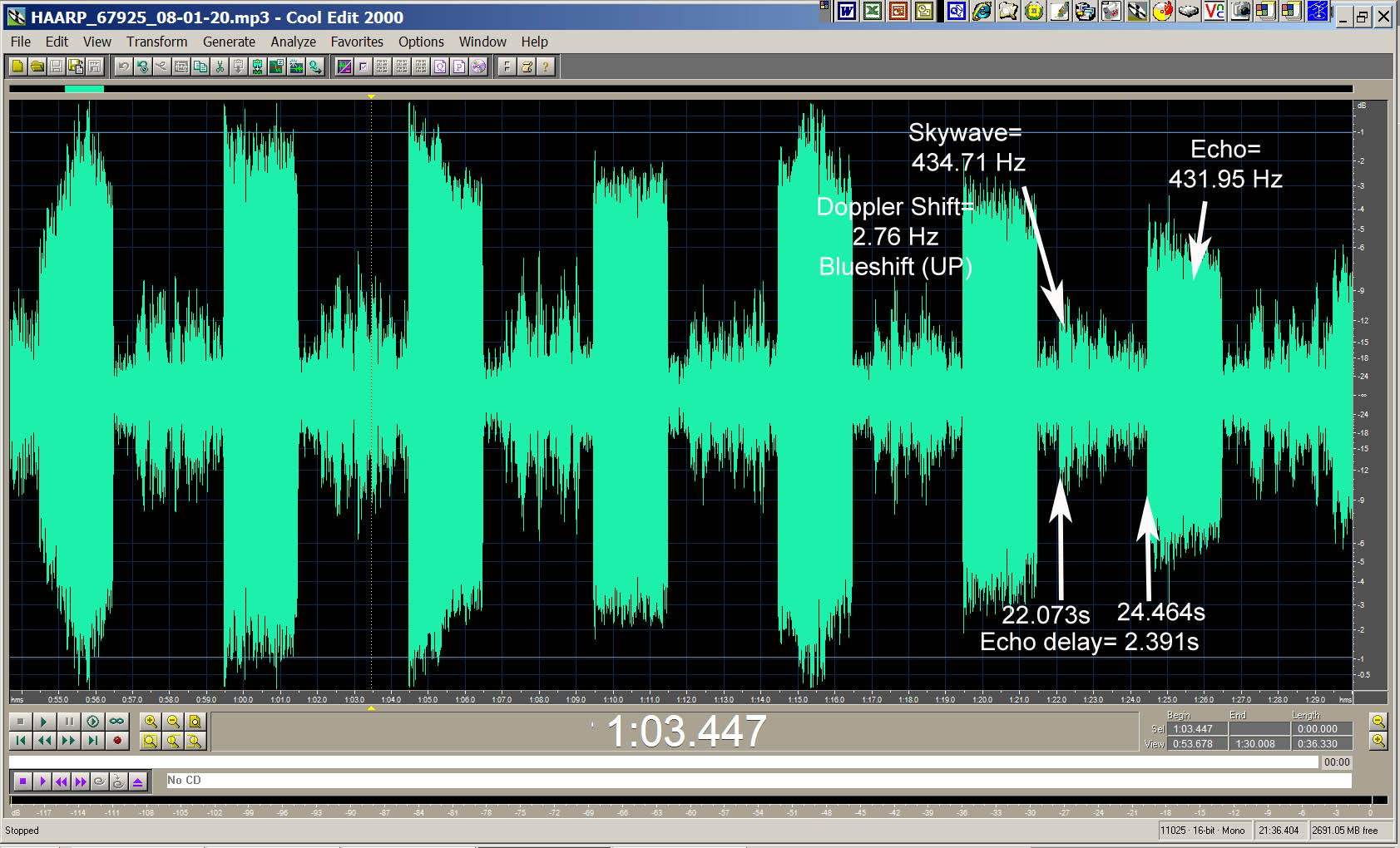.jpg)
HAARP moon-echo test observations at VE6WZ.
Link to HAARP website: HAARP - LWA Moon Bounce Experiment
January 19 and 20, 2008.
Below are observations at VE6WZ
Steve Babcock
56 Christie Knoll Hts. S.W.
Calgary Alberta,
T3H 2V2 Canada
51.02N, 114.11W.
RX on FT-1000d
Ant: Two element Yagi at 100'
Below are edited screen shots of the audio editing program "cool edit" which has been used to analyze the recorded echoes for time delay and frequency shift. The program can do a spectral frequency analysis of any chosen section of the file.
January 19 at approximately 0615z on 7.4075:
Listen to this file here: HARP_74075_08-01-19.mp3
During this observation the up-link (skywave) signal was stronger and was tuned to an audio frequency of 416.64 Hz. The Lunar echo was time delayed by 2.368 seconds and shifted down in audio frequency by 1.47 Hz. This audio downshift is interpreted to represent a Doppler REDSHIFT downward by the same amount. This would suggest the moon is moving away from the earth during this observation. Notice below, that on the next day, this same redshift has increased to about 2.5 Hz, indicating that this this relative motion has increased.
Listening carefully to the above audio file, this 1.5 Hz shift can be detected by ear. Recorded with 2.0 Hz IF filter
.jpg)
January 20 at approximately 0735z on 6.7925:
Listen to this file here: HAARP_67925_08-01-20(103).mp3
NOTICE in this recording the Lunar Echo is STONGER than the skywave which is very weak.
During this observation the Echo (return) signal was stronger than the skywave signal. The skywave signal was tuned to a frequency of 434.71Hz. The Lunar echo was time delayed by 2.391 seconds and shifted down in audio frequency by 2.76 Hz. This audio downshift is interpreted to represent a Doppler REDSHIFT downward by the same amount. (notice the image below is MISLABELED as a blueshift) This would suggest the moon is moving away from the earth during this observation and this relative motion is greater than the previous day.
Recorded with 500 Hz filter

January 20 at approximately 0748z on 6.7925:
Listen to this file here: HAARP_67925_08-01-20(1902).mp3
About 30 min later, the Skywave signal now dominates.
During this observation the Skywave (uplink) signal was stronger than the Lunar Echo signal. The skywave signal was tuned to a frequency of 434.42Hz. The Lunar echo was time delayed by 2.397 seconds and shifted down in audio frequency by 2.47 Hz. This audio downshift is interpreted to represent a Doppler REDSHIFT downward by the same amount. (notice the image below is MISLABELED as a blueshift) This would suggest the moon is moving away from the earth during this observation and this relative motion is greater than the previous day.
On the image below the rapid fading on the uplink (skywave) image is very apparent.
